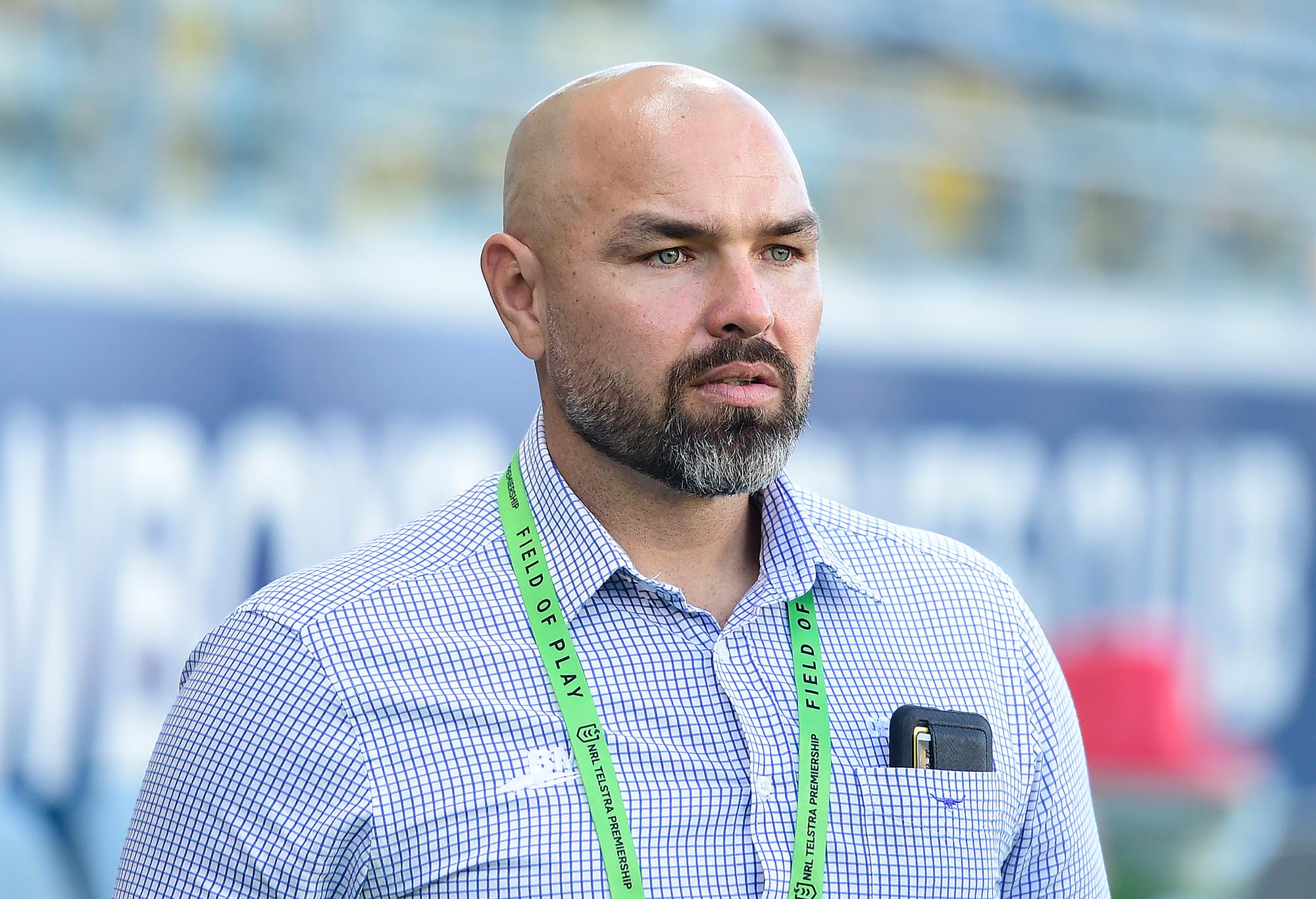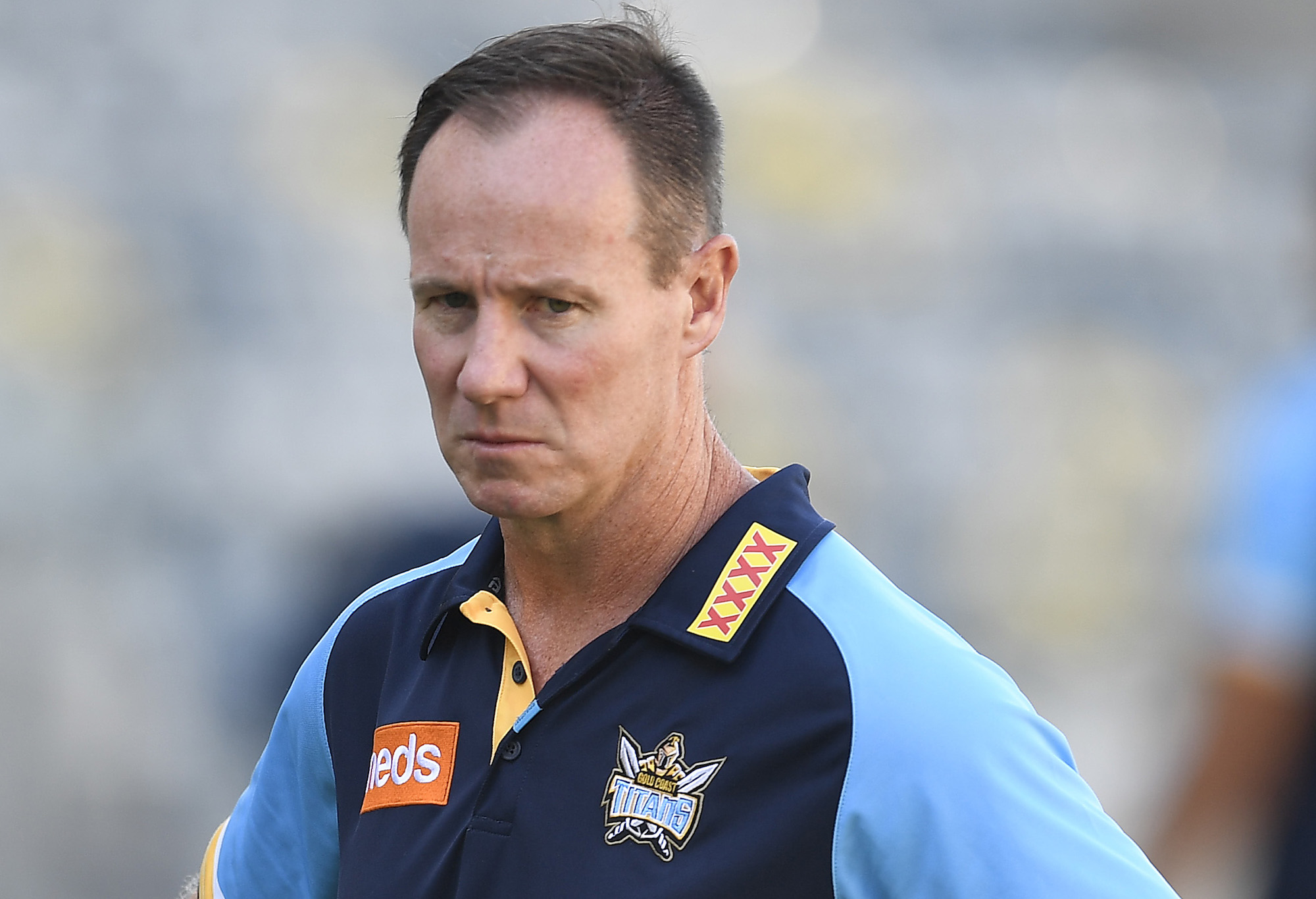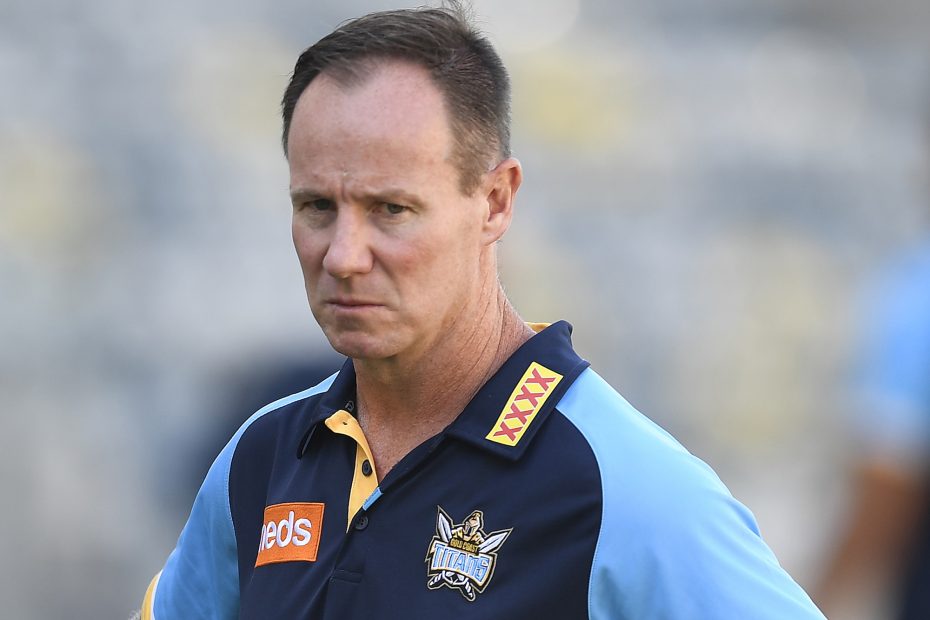Right now we have the situation where three NRL clubs are looking to lock in a new coach after having removed their existing ones.
However, historically there are very few coaches that have walked into dysfunctional clubs and put them on the path to success. Virtually any coach that walks into any of the current vacancies will have a tiny chance of success.
The Warriors have put Stacey Jones in the role temporarily following the exit of Nathan Brown. The Wests Tigers installed Brett Kimmorley as their interim mentor after the sacking of Michael Maguire. Mick Potter is now the caretaker at Canterbury following Trent Barrett’s departure.
There is also lots of pressure on Justin Holbrook at the Gold Coast Titans, Adam O’Brien at the Newcastle Knights and on Anthony Griffin at the St George Illawarra Dragons. If all three of those coaches also got the boot this season it will make 2022 the worst ever year for coach exits since the NRL started in 1998.
Right now that record stands at five departed coaches in both 2002 and 2020. The history of the NRL is littered with discarded coaches who had absolutely outstanding plans and strategies that they weren’t able to implement because they didn’t have the time to do so.
What they lacked was many of the factors that are essential to buy that time. History shows the successful clubs make sure their coaches have the time and support to implement their plans. There is no better example of that than Craig Bellamy at the Storm. He showed up in 2003 with the side not having
made the finals in the previous two seasons and having had Chris Anderson and Mark Murray split the role in the club’s first five seasons.
By 2006 they were in the Grand Final and, except for the year they were excluded from earning competition points due to salary cap rorting, they have not missed the finals since.
While there is no doubt Bellamy inherited a relatively strong list, it was he who developed Cam Smith, Billy
Slater and Cooper Cronk into superstars. And it was he who invented Bellamy ball.

Todd Payten is now in a position where he inherited arguably a very weak list in 2021 that, with only the addition of Valentine Holmes, Peta Hiku and the much maligned Chad Townsend, now finds itself in outright third place.
When we talked early this season he stressed to me that he was building his side on the foundation of character and it shows. However, it is clear he has a very good plan too and that the whole team and club is right behind him.
In almost all cases sacking the coach is papering over the cracks of a dysfunctional organisation that is just as
responsible – if not more responsible – for the team’s on-field failure.
That is brought home by the fact that 62 per cent of the coaching departures have happened at just seven clubs.
When a coach walks into a perennially struggling club their likelihood of success – and I define success as making week two of the finals – is no better than 15 per cent unless the whole club is behind them and it isn’t dysfunctional.

The coach may be a key factor in success, but they are just one factor.
Their strategy and plannng can only effect so much of the required success. There are so many vital factors involved in getting a club to lifting the Provan Summons trophy.
Here are the factors as I see them, ranked roughly in order of least important to most important, that you need your club to be doing most of very well if you are any chance of premiership glory.
- A strong feeder area: Is your club in the middle of a rugby league heartland with lots of juniors and a strong local competition? If so, you may have struck gold – as long as you have a fair few of the other success factors as well.
- No dickheads: Now, this is rugby league we are talking about here so there are always going to be dickheads. What you can’t have is them negatively influencing or controlling the culture, breeding discontent, causing in-fighting or even treason – no matter how good a player they are. Of course, there are some exceptions. Players of the ilk of Andrew Johns, Darren Lockyer, Johnathan Thurston, Cooper Cronk and Cam Smith may be more valuable to a club than the coach, but not many players can get over that bar. The players must buy into the coach, the plan, their teammates and the club if any success is to occur.
- Recent success: This is a no-brainer. If a club is regularly making the finals, especially the very pointy end of the season, it is far easier for that club to recruit and retain players – and often for less than others would have to pay. However, most likely if a club is getting a new coach then they are unlikely to have this factor covered.
- Location: Is your club in a warm climate and/or in a major metropolitan centre with all of the mod cons of life and nightlife? If so, you are in far better shape than regional sides who can’t boast these features that are so attractive to young men. You also don’t command the extremely desirable metropolitan audience that drives the almighty advertising revenue.
- Recruitment and development: Does your side have an excellent recruitment team that is not only good at identifying talent but also attracting them, working effectively with player managers and contributing to the tactical direction of the club? If so, you’re well in front.
- A really good support team: There is no way a coach can control every aspect of team preparation. They must surround themselves with really good assistants. Attacking and defensive coaches, player welfare and pastoral care, fitness and training, rehab and recovery, football management and strategy, media and comms and all manner of ancillary roles must be undertaken by excellent people who have bought in to the whole plan.
- Money: If your club has both a strong financial base – good management, leagues club, on-field success, good crowds (and some wealthy benefactors don’t hurt at all either) – then the chances are that you’ll have great facilities, great logistics and great ability to entice and retain players.
- Star players: It is the players, dummy. If you have a Cameron Munster or James Tedesco or Nathan Cleary then you are in a pretty good place. Those sort of players can and will win you matches – even if the coach isn’t very good. Players also want to play with them. You need to develop, recruit and – vitally – retain star players.
- A strong CEO and board completely united behind the coach: This is the key criteria. Generating on-field success takes considerable time. A coach must be given that time and authority to generate a successful team through their methods, philosophies, structures and recruitment. I’ll give you the tip: you need a minimum of three years in most cases to see the fruits of an implemented plan. If a side has a CEO who is in firm control of all aspects of the club – including the board – and they are totally
backing the coach then your side is in a very strong position. This is especially vital if you are a rookie coach like Trent Robinson and Craig Bellamy were, but it is also important even if you are Wayne Bennett or Des Hasler. Successful clubs stick together in difficult times and they never leak to the media. - Luck: The line between glory and being an also-ran is so very fine. Just one bad play, bad call or unfortunate incident can see triumph snatched cruelly away. Unfortunately there is no controlling this factor.
So to all those clubs looking for a new coach – as well as those thinking of getting a new one – make sure that you are looking at the whole picture that is necessary to achieve success.
Because if you don’t the odds are good that you’ll just be looking for a new coach again in two or three years.
